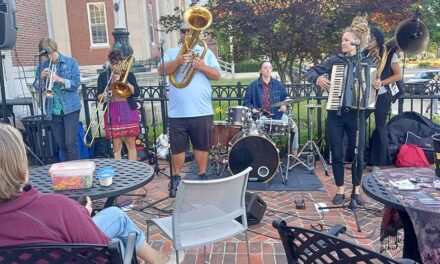By CHRIS LISINSKI
State House News Service
BOSTON — There’s little competition in next week’s state primaries, and Secretary of State William Galvin expects voter turnout of around 15 percent.
Based on ballots cast so far by mail and in early-voting hours, Galvin on Thursday forecast that the Tuesday, Sept. 3 primary election will see more than 500,000 Democratic votes and more than 250,000 Republican votes.
About 750,000 total votes would translate to a turnout rate of nearly 15 percent, surpassing the 8.8 percent in 2016 and the 12.4 percent in 2012. Galvin suggested those two years are the best comparisons because they also had presidential races.
Turnout was much higher in 2020 at 36.6 percent, or more than 1.7 million votes cast. In that election, there was a contested Democratic primary against Sen. Edward Markey, a crowded primary for the U.S. House seat that former Rep. Joseph Kennedy III gave up to run for Senate, and an ongoing pandemic, which likely increased interest in mail-in voting.
Interest so far in 2024, Galvin told reporters, is “remarkable in light of the fact that there are really few contests.”
None of the nine Democrats that represent Massachusetts in the U.S. House face a primary opponent, nor does U.S. Sen. Elizabeth Warren. Voters will get a chance to pick the GOP challengers that will go up against Warren and Congressman Stephen Lynch.
In the Legislature, only about one in six districts feature any kind of contested primary, leaving the vast majority of voters with no options on Beacon Hill besides the status quo. Still, Galvin said he believes local races are driving most of the voter engagement this cycle.
The turnout forecast, Galvin said, “also speaks to the fact that vote by mail is becoming not just accepted, but enthusiastically accepted by our voters.”
“It speaks to the effectiveness of vote by mail that voters, when they get a ballot that they know is postage pre-paid and is secure, even if the races aren’t particularly intense for them, they’re going to participate,” Galvin said. “Most of the legislative districts in Boston do not have contests, but we do have at least two county clerk races, which normally wouldn’t be a big reason, but it’s a reason, so people participate.”
Most of the participation so far has been via mail-in votes. Through Thursday afternoon, voters cast about 21,000 ballots at in-person early voting — only about 4.6 percent of the total cast so far. The rest were submitted by mail.
Asked if he would prefer as elections administrator to see more races contested, Galvin replied, “I was an incumbent for a long time and I never was enthused about having opposition.”
“Clearly, from the point of view of getting a turnout, with more intense contests, especially local legislative races with people likely campaigning door to door, getting everybody you know to participate — that tends to intensify the turnout,” he said. “When it’s not that, you’re relying on civic goodwill.”
Galvin added that he expects even more enthusiasm in November. More voters typically participate in general elections, and turnout surpassed 70 percent in each of the past five presidential election years.
Although he extolled mail-in voting as a big factor in participation, Galvin on Thursday urged Bay Staters who have not yet shipped their ballots back to hand it off to their local elections officials or a drop box. Problems with the U.S. Postal Service are “well-documented,” he said, and there’s no guarantee at this point that a ballot mailed Thursday or later will arrive before the 8 p.m. deadline Tuesday to be counted.
The secretary said he does not think the election taking place the day after Labor Day slows down the delivery of mail-in ballots or “has any adverse effect on the primary” more broadly.
Galvin’s office must have general-election ballots finalized for overseas and military voters by Sept. 20, which leaves little wiggle room in case any primary races require a recount.
“My concern … is that we have some of these larger county races, Governor’s Council races, that affect a lot of ballots, and if we were to have a close race in one of those situations or a recount requested, that could slow us down,” Galvin said. “If it was an individual legislative race, [there are] not as many ballots to recount in a short period of time, not as big a problem.”
Massachusetts has one of the latest statewide primaries in the country, and some voting reform advocates and lawmakers have been unsuccessful in their push to move it up in the calendar.
Galvin said he’s supported the idea of an earlier state primary in the past, but urged legislators considering the idea to keep in mind that any change would also shorten the amount of time for candidates to jump into races and complete nomination papers.
While he downplayed any effects of the day-after-Labor-Day primary, Galvin said he thinks a summertime primary should be off the table.
“In New England — not just Massachusetts, but in New England — because of our weather history, winter and spring and summer, people go away in the summer,” he said. “Especially when kids get out of school, they don’t participate in anything for a period of time.”
Galvin said the June 25, 2013 special election for U.S. Senate, ultimately won by Ed Markey, had “very low turnout.” (The News Service reported at the time that the 27 percent turnout fell short of Galvin’s worst-case forecast.)




